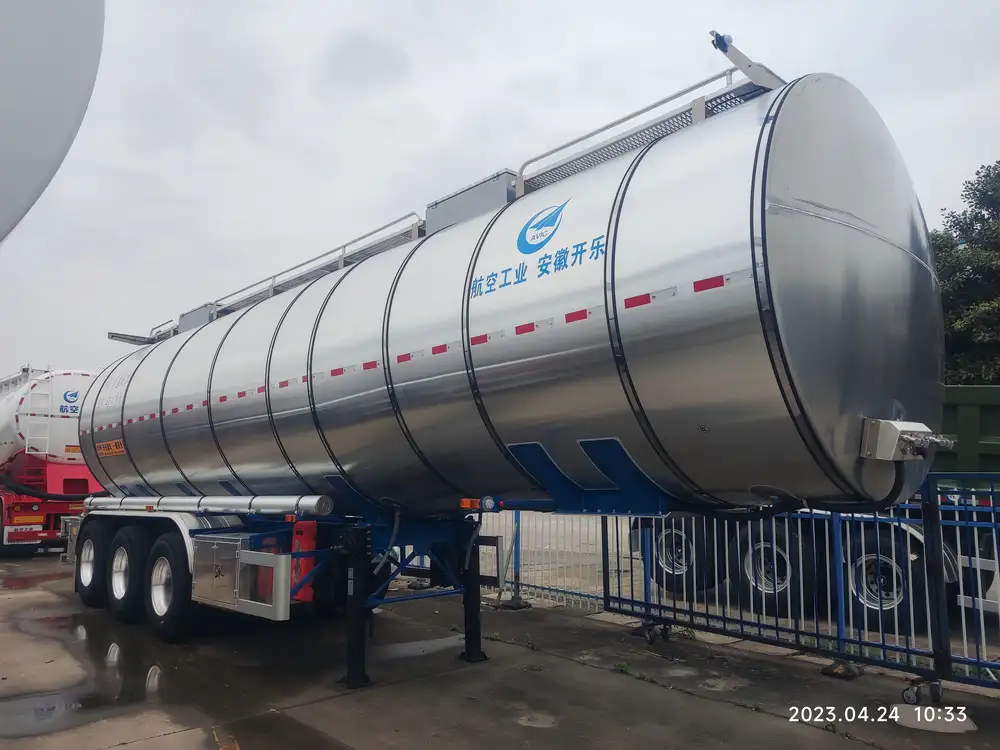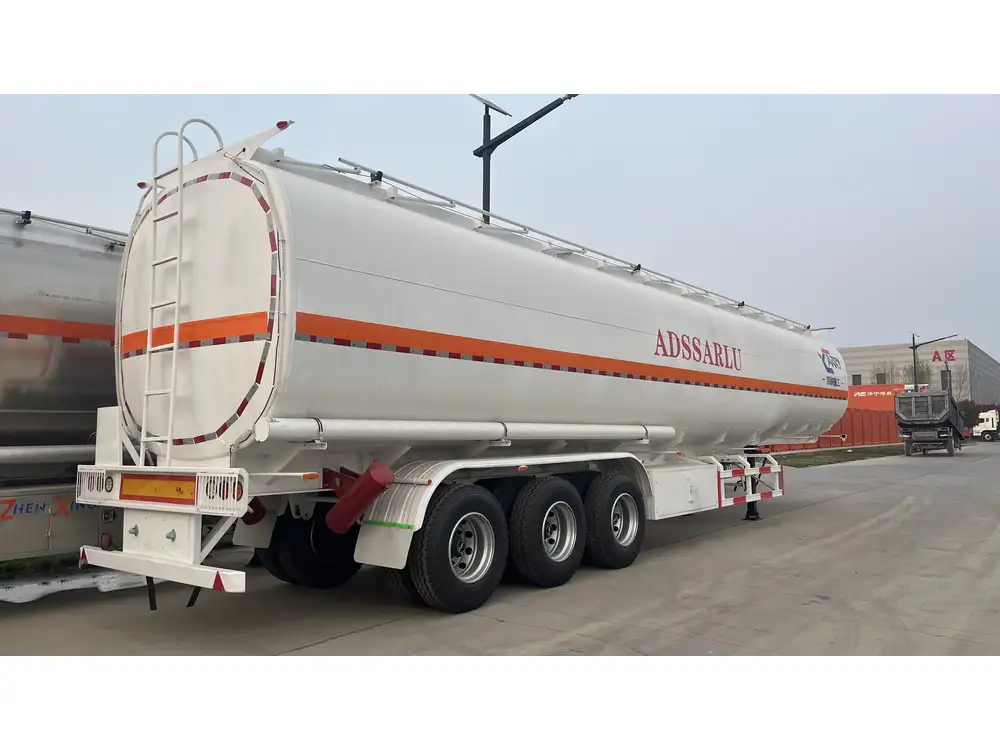When it comes to the transportation industry, efficiency and reliability are paramount. One crucial component that can significantly affect operational performance is the fuel tank on a semi-truck. This article delves into the fuel tanks on semi-trucks for sale in Eritrea, exploring various aspects that operators should consider, including capacity, material, design, and purchasing options.
Understanding Fuel Tanks: Essentials for Semi-Trucks
Fuel tanks are the lifeblood of semi-trucks, ensuring that these vehicles can traverse great distances without frequent refueling stops. Here, we dissect the critical functionalities of fuel tanks, the types available, and their relevance to truck operators.
Types of Fuel Tanks
There are primarily two types of fuel tanks: internal and external.
| Type | Description | Pros | Cons |
|---|---|---|---|
| Internal | Integrated into the truck frame. | Saves space and weight. | Limited capacity; hard to access. |
| External | Mounted externally on the chassis. | Larger capacity; easier to replace. | Adds extra weight; potential damage. |

Materials Used in Fuel Tank Manufacturing
- Aluminum: Lightweight, resistant to corrosion, and durable.
- Steel: Offers high strength and is less expensive but more prone to rusting.
- Polyethylene: Lightweight, corrosion-resistant, and offers flexible designs, albeit less durable.
Fuel Tank Capacity
Fuel tank capacity can directly affect a semi-truck’s operational efficiency. The standard capacities range from 100 to 300 gallons, depending on the model and manufacturer.
To optimize fuel efficiency in Eritrean terrain, it is essential to select a tank size that aligns with your travel demands:
| Capacity (gallons) | Range (miles) | Best Use Cases |
|---|---|---|
| 100-150 | 500-700 | Short local routes |
| 200-250 | 700-1,200 | Long-haul transportation |
| 250-300 | 1,200+ | Heavy load over rough terrain |
Advantages of High-Quality Fuel Tanks

1. Enhanced Fuel Efficiency
High-quality fuel tanks provide optimal fuel flow and minimize waste. This efficiency is particularly vital for Eritrean truck operators who often find themselves navigating long distances under varying conditions.
2. Safety Compliance
Rigorous safety standards allow semi-trucks to operate without the high risk of spills or leaks. Modern tanks are designed with advanced features like anti-siphon systems and high-strength materials, ensuring that safety is never compromised.
3. Durability and Longevity
Semi-trucks endure significant wear and tear. Investing in high-quality fuel tanks means less frequent replacements, thereby reducing long-term costs. The longevity of the tank is also influenced by the material chosen, with aluminum often providing a balanced mix of weight and durability.

Selecting the Right Fuel Tank: Key Considerations
Assessing Your Needs
Understanding your operational requirements is the first step towards selecting the appropriate fuel tank. Here are pivotal aspects to consider:
- Frequency of Long-Distance Travel: High-capacity tanks are suitable for routes demanding frequent refueling.
- Regional Fuel Availability: Evaluate the availability of fuel stations along your routes.
- Terrain Challenges: Rough or uneven terrains require robust tanks that can withstand impacts.
Compatibility with Existing Vehicles
Review manufacturer specifications to ensure that the chosen tank complements your semi-truck’s design and functional parameters.

Pricing and Budget
In Eritrea, the pricing can vary significantly depending on the material, capacity, and brand. Below is a general pricing guide:
| Tank Material | Price Range (USD) | Features |
|---|---|---|
| Aluminum | $1,200 – $1,800 | Lightweight, resistant |
| Steel | $800 – $1,500 | Sturdy, cost-effective |
| Polyethylene | $1,000 – $1,500 | Corrosion-resistant, flexible |
It’s essential to consider the overall cost of ownership, which includes initial purchase, maintenance, and fuel efficiency.
Where to Buy Fuel Tanks on Semi Trucks in Eritrea
Local Manufacturers and Distributors
Eritrea boasts a burgeoning industrial environment. Look for local suppliers who specialize in heavy-duty components for semi-trucks, such as CarMax Trailer. Engaging local manufacturers offers benefits such as warranty services and after-sales support.

Online Marketplaces
Online platforms have broadened the scope for purchasing, allowing operators to browse various options. However, ensure that you check for reputable sellers and consider return policies or warranties.
Maintenance Tips for Fuel Tanks
Regular Inspections
Conduct systematic visual inspections for signs of corrosion or leaks. Clogs within the fuel line can bring operations to a halt, so keeping the lines clean is paramount.

Cleaning and Degreasing
Over time, dirt and oil can accumulate within the tank. Schedule regular cleanings to extend the tank’s life and maintain performance.
Monitor Fuel Quality
Using quality fuel impacts not only engine performance but also the longevity of the fuel tank. Seasoned truck operators in Eritrea often prefer suppliers known for maintaining high fuel standards.
Conclusion
Fuel tanks on semi-trucks are not merely functional components; they are pivotal to the smooth operation of an entire transportation network. The right tank can dramatically enhance fuel efficiency, ensure safety compliance, and save money in the long run. By choosing suppliers like CarMax Trailer, operators can access high-quality fuel tanks designed to meet their operational needs, ensuring success in the challenging landscapes of Eritrea.

FAQs
1. How do I know if my fuel tank needs to be replaced? Signs include visible rust, leaks, frequent fuel loss, or performance issues with your vehicle.
2. What is the best fuel tank material for semi-trucks in harsh conditions? Aluminum is often recommended for its corrosion resistance and lightweight properties, especially in wet or coastal areas.
3. Can I install a larger tank on my existing semi-truck? Yes, as long as the truck frame can support the additional weight and dimensions.
4. Are there legal regulations for fuel tanks? Yes, always consult local regulations concerning tank size, materials, and installation standards to ensure compliance.













Reviews
There are no reviews yet.